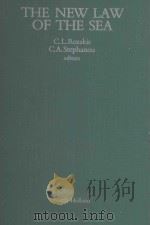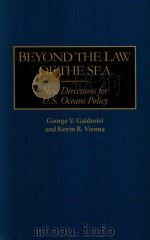《A HANDBOOK ON THE NEW LAW OF THE SEA 2》
| 作者 | 编者 |
|---|---|
| 出版 | MARTINUS NIJHOFF PUBLISHERS |
| 参考页数 | 1691 |
| 出版时间 | 1991(求助前请核对) 目录预览 |
| ISBN号 | 0792310632 — 求助条款 |
| PDF编号 | 812894048(仅供预览,未存储实际文件) |
| 求助格式 | 扫描PDF(若分多册发行,每次仅能受理1册) |
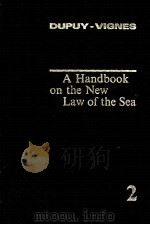
Part IV The uses of the sea833
Chapter 17 NAVIGATION835
Section 1.Freedom of navigation and its limits835
Division A.Freedom of navigation835
Para.1.Historical origin835
Para.2.The concept of freedom of navigation836
Para.3.Geographical scope838
Para.4.The means of exercising freedom of navigation:ships841
Para.5.Freedom of navigation-what it comprises845
Division B.Limits on the freedom of navigation847
Para.1.The various types of limits847
Para 2.Rules allowing physical interference with the navigation of foreign vessels848
Para.3.General and particular rules designed to ensure compatibility between navigation and other activities at sea868
Para.4.General rules designed to ensure compatibility between navigation and other freedoms of the high seas869
Para.5.Special compatibility rules designed to ensure the exercise of navigation by different States873
Para.6.Particular rules of compatibility between navigation and other freedoms887
Para.7.Rules relating to the compatibility between freedom of navigation and powers of the coastal State over its economic zone and its continental shelf889
Para.8.Rules on compatibility between freedom of navigation and activities of exploration and exploitation of the international sea-bed Area895
Para.9.Warships and other ships on government service and the freedom of navigation899
Section 2.Innocent passage906
Division A.The general rule906
Para.1.The principle of innocent passage906
Para.2.Geographical scope of innocent passage907
Para.3.The concept of"passage"910
Para.4.When is passage"innocent"?911
Para.5.The rights of the coastal State as against non-innocent passage915
Para.6.The regulation of innocent passage by the coastal State917
Division B.Rules peculiar to certain vessels924
Para.1.The passage of nuclear vessels and vessels carrying dangerous cargoes924
Para.2.The passage of submarines926
Para.3.The innocent passage of warships929
Division C.The suspension of the exercise of the right of innocent passage935
Division D.The exercise of criminal and civil jurisdictions on board ships engaged in innocent passage937
Division E.Navigation in certain waters940
Para.1.Navigation in internal waters and access to ports940
Para.2.Navigation in international canals942
Section 3.Transit passage and archipelagic passage945
Para.1.Transit passage in straits945
Para.2.The right of archipelagic passage through sea lanes and air routes in archipelagos956
Para.3.The contents of the right of transit passage and of archipelagic sea lanes passage960
Para.4.Laws and regulations of States bordering straits and archipelagic States relating to transit passage and archipelagic sea lanes passage965
Para.5.Limits imposed on the contents and application of the laws and regulations967
Para.6.Right of transit passage and customary law970
Chapter 18 SUBMARINE CABLES AND PIPELINES977
Introduction977
Section 1.The Convention on the Protection of Submarine Cables978
Section 2.The International Law Commission979
Section 3.The Geneva Conference on the Law of the Sea981
Section 4.The United Nations Convention on the Law of the Sea983
Conclusions987
Chapter 19 FISHERIES AND BIOLOGICAL RESOURCES989
Section 1.General989
Subsection 1.Background and fundamental considerations989
Division A.Terminology and basic notions989
Para.1.The division of the sea into different zones and their role in regard to fisheries law989
Para.2."Fisheries"and"biological resources"991
Division B.The general characteristics of international law and their specific role in regard to the law and practice of fisheries993
Subsection 2.Traditional fisheries law and its inadequacies under today's conditions995
Section 2.The development of the modern law of fisheries and biological resources,with special reference to the development of new zones of national jurisdiction999
Subsection 1.Trends in State practice towards increased coastal State jurisdiction over fisheries and biological resources999
Subsection 2.Basic considerations in the modern law of fisheries1009
Subsection 3.The role of international conferences1017
Subsection 4.The 1974 judgments by the International Court of Justice1029
Section 3.The area within 12 miles:internal waters,territorial seas,adjacent zones1034
Subsection 1.General1034
Subsection 2.Waters under the sovereignty of the coastal State1036
Subsection 3.The 12-mile adjacent fishery zone1040
Subsection 4.Obligations of conservation in waters under the exclusive fisheries jurisdiction of the coastal State1045
Section 4.Coastal State jurisdiction on fisheries beyond 12 miles,the exclusive economic zone,200-mile fishery zones1047
Subsection 1.General1047
Subsection 2.Claims for a territorial sea of more than 12 nautical miles1049
Subsection 3.The 200-mile economic zone or 200-mile fishery zone1050
Division A.The right to a 200-mile zone1050
Para.1.The legal situation prior to 19751050
Para.2.The right to a 200-mile fishery zone or economic zone under contemporary international law1052
Division B.The applicable regime in the 200-mile zone1067
Para.1.The sovereign rights of the coastal State in respect of fisheries and biological resources1067
Para.2.Obligations incumbent upon the coastal State in matters of fisheries and biological resources1071
Para.3.Criteria and conditions for the allocation of fishery rights to other States1084
Para.4.Sedentary species:the continental shelf1105
Para.5.Anadromous and catadromous species1106
Section 5.The regime of the high seas1108
Section 6.Obligations to co-operate with other States in the preservation of resources and in the maintenance of maximum or optimum sustainable yield1117
Chapter 20 MARINE SCIENTIFIC RESEARCH1127
Section 1.Scientific research under the control of the coastal State1128
Para.1.The regime governing scientific research in the territorial sea1131
Para.2.The regime governing scientific research in the exclusive economic zone and on the continental shelf1133
Section 2.Scientific research under the control of States1141
Chapter 21 DEVELOPMENT AND TRANSFER OF MARINE TECHNOLOGY1147
Section 1.Introductory remarks1147
Section 2.General provisions(Arts.266-269)1148
Section 3.International co-operation(Arts.270-274)1149
Section 4.National and regional marine scientific and technological centres and co-operation among international organizations1150
Chapter 22 THE PRESERVATION OF THE MARINE ENVIRONMENT1151
Plan of this Chapter1152
Section 1.Development of a conventional machinery for combating marine pollution1153
Subsection 1.Origins1153
Subsection 2.Compensation for pollution damage1155
Division A.The lessons of the Torrey Canyon1155
Para.1.Elaboration of the 1969 and 1971 Brussels Conventions1155
Para.2.Voluntary compensation from the industry:the TOVALOP and CRISTAL plans1158
Para.3.Inadequacies-compensation for pollution damage resulting from tanker activity at sea1160
Division B.Questions raised by the Amoco Cadiz accident1161
Para.1.Gaps in the convention machinery1162
Para.2.Re-assessment of the compensation ceilings1163
Para.3.The ambiguous situation of the coastal State1163
Para.4.Evaluation of the damage1164
Division C.Attempt to improve the system:the 1984 Protocols1165
Subsection 3.Prevention of the risk of pollution1169
Division A.Prevention of pollution1169
Para.1.Operational discharges1169
Para.2.Dumping and incineration of industrial wastes1173
Para.3.Land-based pollution1178
Division B.Oil spills response-intervention of the coastal State1180
Para.1.The Brussels Convention on the right of intervention on the high seas1180
Para.2.Regional co-operation1181
Division C.Prevention of the pollution-causing maritime casualty - SOLAS1183
Section 2.International law governing the general preservation of the marine environment1185
Subsection 1.General information1185
Subsection 2.Structure of the Convention text and general characteristics of the rules relating to the preservation of the marine environment1190
Para.1.Structure1190
Para.2.Classification of the rules1192
Subsection 3.The pre-eminence of the coastal State1194
Division A.The exclusive competences of the coastal State1195
Para.1.Protection of living resources1195
Para.2.The fight against pollution caused by activities relating to the sea-bed1198
Para.3.The fight against pollution from vessels1199
Division B.Concurrent competences1200
Para.1.The fight against pollution from vessels1201
Para.2.The fight against pollution from land-based sources1210
Para.3.The fight against pollution by dumping1212
Subsection 4.The international liability of States for damage to the marine environment1213
Para.1.Applicability of the relevant rules of the law of the environment1214
Para.2.The contribution made by the Convention on the Law of the Sea1221
Para.3.Types and regimes of liability incurred1223
General conclusion1230
Chapter 23 PEACEFUL USES OF THE SEA,DENUCLEARIZATION AND DISARMAMENT1233
Section 1.General topics1233
Subsection 1.Sea,an area of peace?1233
Division A.Uses of the sea and the use of force1233
Para.1.General remarks1233
Para.2.Scope of this Chapter1234
Division B.Reservation of the sea for peaceful purposes1235
Para.1.Origin of the principle1235
Para.2.Law of the sea1235
Division C.Zones of peace1239
Para.1.Initiatives1239
Para.2.Indian Ocean1241
Para.3.Mediterranean1242
Para.4.South Atlantic1243
Para.5.South-East Asia1244
Subsection 2.The sea and contemporary strategy1245
Para.1.Introduction1245
Para.2.Naval strategy today1245
Subsection 3.The law of the sea and military activities1247
Division A.Warships1249
Para.1.Definition1249
Para.2.Immunities1250
Division B.Military activities1251
Para.1.Navigation and naval manoeuvres1251
Para.2.Artificial islands,installations,structures and devices used for military purposes1254
Para.3.Marine scientific research1256
Section 2.Disarmament and naval arms regulations1258
Subsection 1.Historical outline1258
Division A.Nineteenth century1258
Division B.Hague Peace Conferences of 1899 and 19071259
Para.1.First Conference1259
Para.2.Second Conference1260
Division C.Treaties of Peace 1919-19231261
Para.1.Treaty of Versailles1261
Para.2.Other Treaties of Peace1262
Division D.League of Nations1263
Para.1.The Covenant1263
Para.2.The 1922 Washington Naval Treaty1264
Para.3.The London naval treaties1265
Para.4.Other treaties1266
Division E.1947 Treaties of Peace1266
Para.1.Naval clauses1267
Para.2.Treaty of Peace with Italy1268
Division F.United Nations1269
Para.1.The Charter1269
Para.2.The results1269
Para.3.Other organizations and conferences1270
Subsection 2.Sources of law1271
Division A.Treaties1271
Para.1.Treaties and military Powers1271
Para.2.Treaties creating"objective regimes"1272
Division B.Unilateral acts of States1273
Division C.Acts adopted by international organizations and international conferences1275
Para.1.Resolutions of the United Nations General Assembly1276
Para.2.Helsinki Final Act1277
Division D.Customary law1278
Para.1.General remarks1278
Para.2.Customary law and disarmament1278
Subsection 3.Measures of disarmament and naval arms regulation1279
Division A.Limitations of naval armament1279
Para.1.Introduction1279
Para.2.Arms trade1279
Para.3.Weapons limitations1280
Division B.Demilitarized areas1282
Para.1.Definition1282
Para.2.Demilitarization and maritime areas1283
Para.3.Islands1284
Para.4.Straits1287
Para.5.Canals1290
Para.6.Sea1293
Subsection 4.The denuclearization of the sea1296
Division A.Restriction and prohibition of nuclear weapons1296
Para.1.Prohibition of the use of nuclear weapons1296
Para.2.Limitation of strategic nuclear weapons at sea1297
Para.3.Denuclearization and the use of nuclear energy for peaceful purposes1300
Division B.Prohibition of nuclear weapon tests1301
Para.1.Introduction1301
Para.2.Sea1302
Para.3.Sea-bed1303
Para.4.Antarctica1305
Para.5.Latin America1305
Para.6.South Pacific1305
Division C.Nuclear-weapon-free zones1306
Para.1.Introduction1306
Para.2.The sea-bed1307
Para.3.Antarctica1308
Para.4.Latin America1309
Para.5.South Pacific1310
Para.6.Other regions1311
Subsection 5.Confidence-building measures and measures intended to reduce the risk of the outbreak of armed conflicts1313
Para.1.Introduction1313
Para.2.Prevention of incidents on the high seas1315
Para.3.Conference on Security and Co-operation in Europe(CSCE)1316
Chapter 24 THE INTERFERENCE BETWEEN THE RULES OF THE NEW LAW OF THE SEA AND THE LAW OF WAR1321
Section 1.Maritime spaces"a region of war".The case of the exclusive economic zone1322
Section 2.The behaviour of belligerents and the legitimate exercise of the rights arising out of the rules of the law of the sea-the zones of war or the zones of exclusion1325
Section 3.Blockade and transit passage1329
Chapter 25 SETTLEMENT OF DISPUTES1333
Introduction1333
Para.1.Historical background1334
Para.2.The concept of"dispute"as used in Part XV of the Treaty1339
Para.3.Obligation to resolve dispute by peaceful means1341
Para.4.Freedom of choice of peaceful means of settlement1342
Section 1.Procedures entailing optional decisions1344
Subsection 1.Exchange of views1344
Subsection 2.Conciliation1345
Para.1.Areas where ratione materiae jurisdiction is subject to compulsory conciliation1345
Para.2.Conciliation procedure1350
Section 2.Settlement procedures entailing binding decisions1358
Subsection 1.General theory of jurisdiction1359
Division A.Ratione materiae jurisdiction1359
Para.1.Disputes amenable to the judicial procedures1359
Para.2.Exceptions1360
Division B.Ratione personae jurisdiction1363
Division C.Ratione fori jurisdiction1366
Para.1.Freedom to choose the competent court or tribunal1366
Para.2.Exercising freedom of choice1369
Subsection 2.The theory of law of the sea dispute settlement proceedings1374
Division A.The powers of the nominated court or tribunal1374
Para.1.The power to resolve disputes1374
Para.2.Emergency powers of the court or tribunal before which a matter is brought1378
Division B.Judicial procedures1383
Subdivision A.How the procedure functions1384
Subdivision B.Organization of proceedings1392
Para.1.Arbitral procedures1393
Para.2.Judicial procedures1397
Appendices1403
CONTENTS1405
1.UNITED NATIONS CONVENTION ON THE LAW OF THE SEA1421
2.FINAL ACT OF THE THIRD UNITED NATIONS CONFERENCE ON THE LAW OF THE SEA1583
3.STATUS OF THE UNITED NATIONS CONVENTION ON THE LAW OF THE SEA1617
Bibliography1625
Analytical index1655
1991《A HANDBOOK ON THE NEW LAW OF THE SEA 2》由于是年代较久的资料都绝版了,几乎不可能购买到实物。如果大家为了学习确实需要,可向博主求助其电子版PDF文件(由 1991 MARTINUS NIJHOFF PUBLISHERS 出版的版本) 。对合法合规的求助,我会当即受理并将下载地址发送给你。
高度相关资料
-

- THE LAW OF THE SEA IN A NUTSHELL
- 1984 WEST GROUP
-
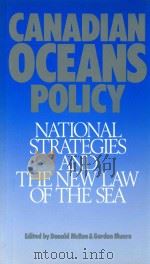
- Canadian Oceans Policy:National Strategies and the New Law of the Sea
- 1989 University of British Columbia Press
-
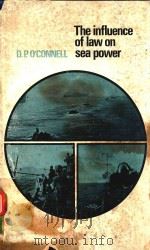
- THE INFLUENCE OF LAW ON SEA POWER
- 1975 MANCHESTER UNIVERSITY PRESS
-

- The International Law of the Sea
- 1994 Dartmouth
-

- Handbook on the law of private corporations
- 1936 West Publishing Co.
-
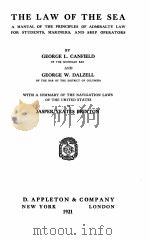
- THE LAW OF THE SEA
- 1921 D. APPLETON AND COMPANY
-

- THE UNITED NATIONS A HANDBOOK ON THE NEW WORLD ORGANIZATION
- 1946 PHOENIX HOUSE
-

- A Treatise on The Law Of Collisions at Sea
- 1880 Stevens And Sons
-
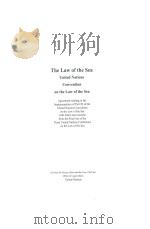
- The Law of the Sea
- 1997 United Nations
-
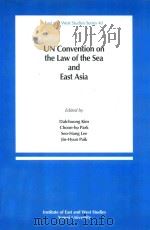
- UN Convention on the Law of the Sea and East Asia
- 1996 Institute of East and West Studies
-

- INTERNATIONAL LAW OF THE SEA AND MARINE AFFAIRS: A BIBLIOGRAPHY SUPPLEMENT TO THE 1980 EDITION
- 1984 MARTINUS NIJHOFF PUBLISHERS
提示:百度云已更名为百度网盘(百度盘),天翼云盘、微盘下载地址……暂未提供。➥ PDF文字可复制化或转WORD
